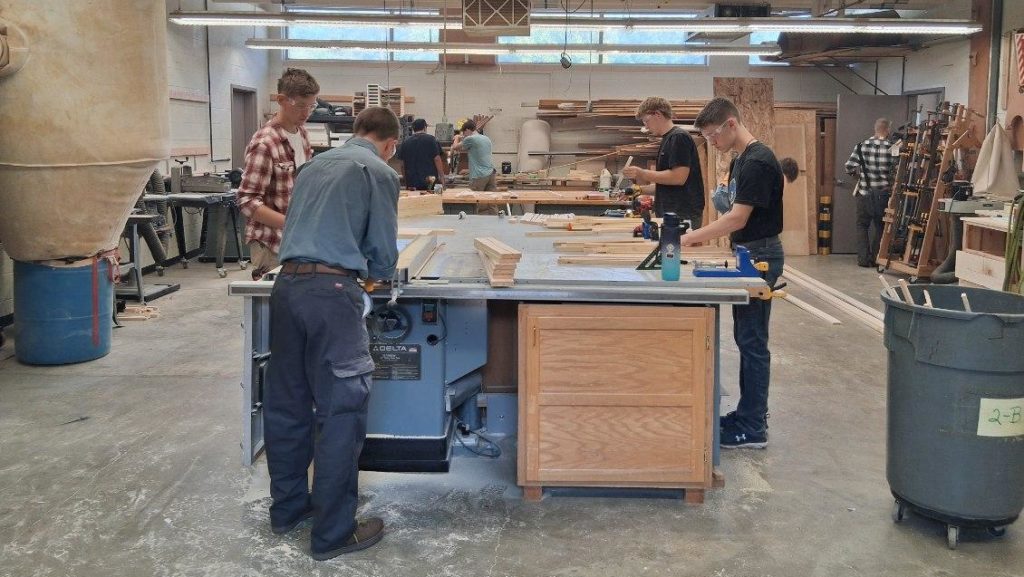Calling the increasing decline in young men going to college a crisis is not hyperbole. It is a grim reality substantiated by hard data.
According to the American Institute for Boys and Men, there are now 2.4 million more female than male undergraduates on U.S. campuses, and 54% of female students graduate in four years as opposed to just 43% of their male counterparts.
There is also a crisis in Catholic higher education, easily detected by anyone paying attention. So many once vaunted Catholic institutions are now indistinguishable from secular colleges.
There is a third crisis as well, with the crushing debt so many college graduates face with student loans. The average student loan debt is now roughly $40,000 per borrower, and if that is the average, then we can guess how many people are carrying debt well into six figures.
All of this is not merely a matter of dollars and cents, or good or bad career paths. If a young man is not equipped with the necessary knowledge and skills to provide for himself, he is not likely to be able to do so for a family either. A Pew Research Center study found 20% of males between the ages of 24 and 35 still living at home.
Kent Lasnoski, Ph.D., is in the process of addressing all of these issues in one place. He is at his core a Catholic educator with a doctorate in moral theology, with an emphasis on marriage. He and his wife, Caitlin, authored a book, “30 Days with Married Saints” (Pauline Books & Media, $18.95), and have been heavily involved in the homeschooling movement.
Lasnoski has taught at a variety of institutions, including the last nine years at Wyoming Catholic College. His dream has long been to open a Catholic college in the Midwest, even though he describes himself as “just a lowly theologian.”
When the theologian crossed paths with Bishop Thomas Paprocki of Springfield, Illinois, things changed in a big way. The bishop also had a vision for a new kind of higher education that coincided with Lasnoski’s dream. The result is San Damiano College for the Trades in Springfield, which welcomed its first students in August.
The name is no accident. Like St. Francis of Assisi, who saw the Church of San Damiano in disrepair and heard his calling to rebuild it, the theologian and the bishop heard another calling for a place that needed the same kind of remodeling.

San Damiano students will have a unique educational journey. They will be solidly educated in the internal disciplines of theology, humanities, philosophy, and the arts, but will also learn how to make a dovetail joint, plumb a remodeled bathroom, or rewire a house. It is a tall order, with many opportunities.
As Lasnoski sees it, “there are something like 400,000 manufacturing jobs just sitting open right now. … Think of how we could change the world if we prepare Catholic men for that world.”
Like St. Francis, there were practical applications to rebuilding a church structure that required hands and tools. And even if today someone lives in a “smart” house that monitors the HVAC system, water supply, and electrical output, no artificial intelligence is going to roll up its sleeve and fix the air conditioner, the toilet, or the electrical panel when they break. And when you are sweltering in your house, you are not going to call someone with a degree in 17th-century Russian poetry. You’ll want a skilled tradesman.
San Damiano College for the Trades is not only going to provide a customer with a skilled plumber or electrician, but also one who has been steeped in a classical education of faith-based ethics.
At the moment, the school is only equipped to accept male students, but there are plans, God willing, to expand and offer similar instruction to females. Bishop Paprocki sees this as “a truly unique opportunity for full formation of the human person,” while at the same time, even in a small way, stemming the tide of declining male participation in the academic universe.
Now for the most “radical” aspect of San Damiano College for the Trades. Not only will its future graduates emerge with thousands of years of philosophy, theology, literature, and ethics under their belts, but they will also have tool belts and enter the workforce with zero debt. That miracle will be accomplished by students working in the trade of their choice for each of their three years and earning money to offset the tuition.
The first class at San Damiano College of the Trades features only 25 students. That sounds small, but a man in the carpentry trade in Judea started with only 12.

